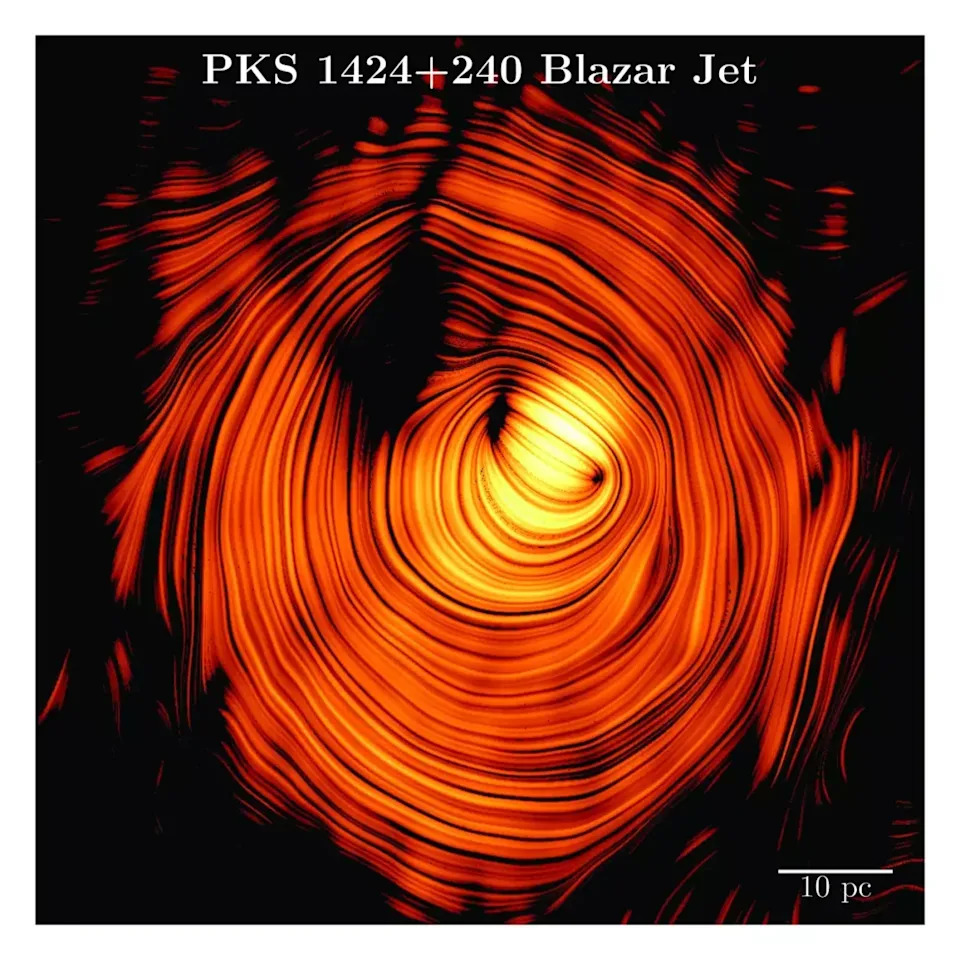A bright galactic nucleus with a supermassive black hole that spews out cosmic radiation is pointing straight at us.
Thankfully, the object, unimaginatively dubbed "PKS 1424+240," is located roughly 7.4 billion light-years away and likely won't pose much of a danger.
But that hasn't stopped a group of excited astronomers from renaming it: the "Eye of Sauron," the symbol adopted by the Dark Lord in JRR Tolkien's epic "Lord of the Rings" trilogy.
A new image of the object was recently unveiled, revealing a bright, hot center with cosmic waves spinning around it, spewing a jet of plasma straight at Earth — as if one was staring right into the Eye of Sauron.

The scientists published the image in a new paper in the journal Astronomy & Astrophysics, detailing how they unraveled a mystery at the center of PKS 1424+240, which appears bright from matter falling into the ravenous maw of the black hole.
PKS 1424+240 is specifically a blazar, a type of galactic nucleus that shoots jets of plasma from its center at almost the speed of light straight towards Earth. Quasars are essentially the same thing, but are not oriented towards our home planet.
What's curious about PKS 1424+240, or the Eye of Sauron, is that it emits copious amounts of gamma rays and neutrinos and is considered the brightest neutrino-producing blazar in the universe, at least as far as we know.
But PKS 1424+240 also has cosmic jets that move "sluggishly," according to a statement from the Max Planck Institute for Radio Astronomy, where part of the research was conducted. This goes against a commonly held assertion that only fast-moving jets can produce bright objects.
After poring over years of observation from radio telescopes and studying the image, astronomers concluded that they are looking at a kind of "optical illusion."
Having the cosmic jets pointing directly at Earth increases the brightness of the blazar, while they also appear slower than they actually are.
"This alignment causes a boost in brightness by a factor of 30 or more," said Jack Livingston, study co-author and researcher at Max Planck in a statement. “At the same time, the jet appears to move slowly due to projection effects — a classic optical illusion."
What's also neat is that the astronomers were able to recreate what the blazar jet's magnetic field may look like — a spiral, or a toroidal doughnut.
Besides plumbing the mysteries of the blazar, the study could help astronomers better understand the relationship between the shape of these cosmic jets and their magnetic fields, further shedding light on the nature of supermassive black holes.
More on black holes: Scientists Discover What Appears to Be the Largest Black Hole in the Universe, So Heavy That It Completely Bends the Light Around It Into a Giant Ring







Comments